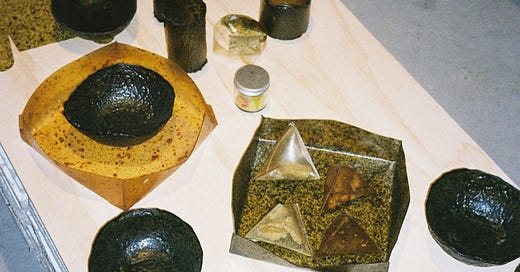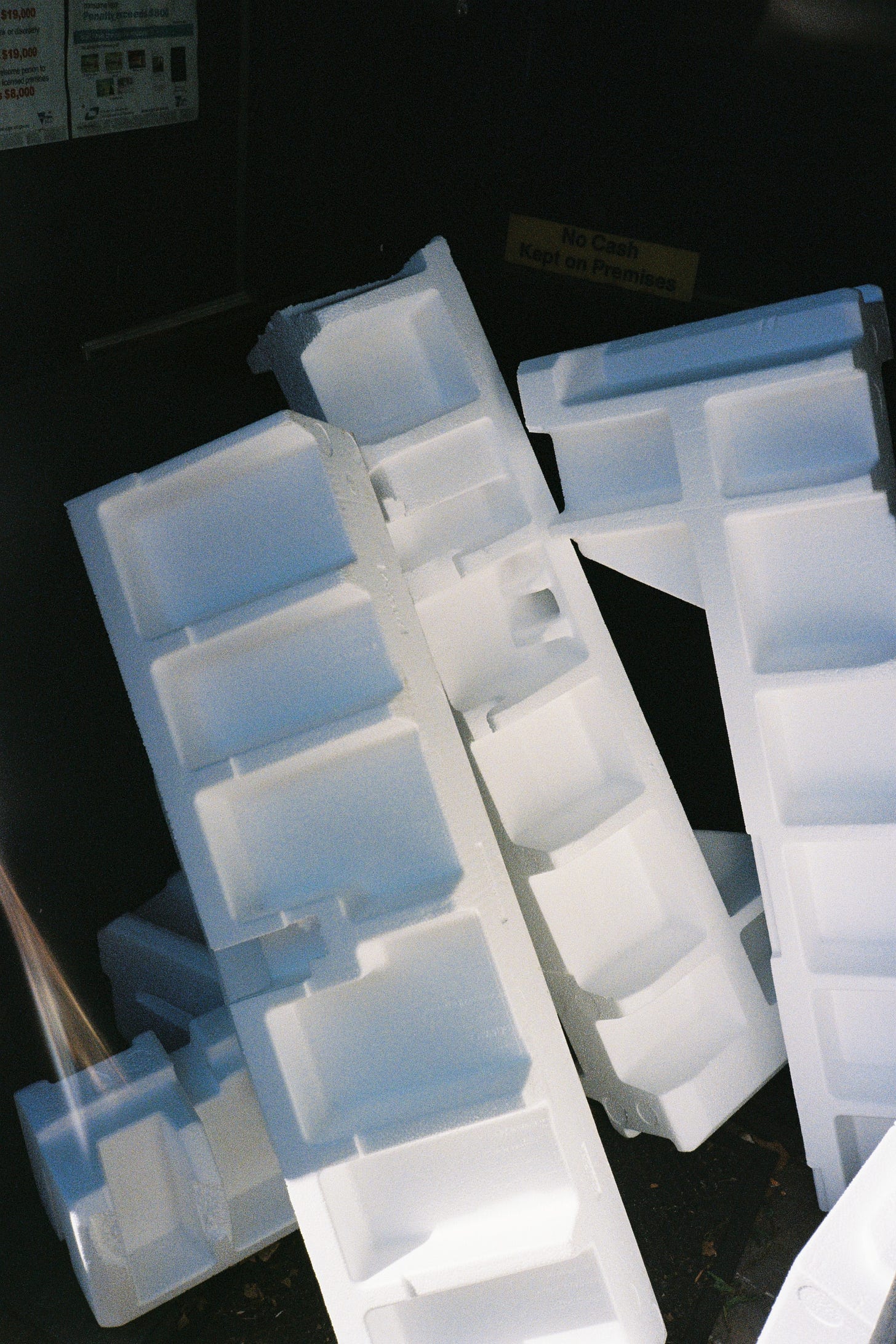Kitchen Conversations
On understanding value and how it relates to materials and waste reform and why we should all be interested in having a direct relationship with the materials we are surrounded by.
[Photo: Future Trails. A collaboration between Other Matter, Rough Rice and Arc’teryx].
We all engage with materials. Everything around us is materials. Much of my work involves thinking about materials and, more specifically, their end-of-life. And this is mostly waste, which is intrinsically linked to value. A few years back, I read the Doctoral Thesis of Peter Wallström, On Value and Waste. It opens with this:
“The word VALUE, it is to be observed, has two different meanings and sometimes expresses the utility of some particular object and sometimes the power of purchasing other goods which the possession of that object conveys. The one may be called, “value in use,” the other, “value in exchange.” The things which have the greatest value in life have frequently little or no value in exchange. Nothing is more useful than water: but it will purchase scarce any thing, scarce anything can be had in exchange for it.”
This is known as The Paradox of Value.
Plastic is value in use.
Many of us are more aware of certain overarching topics related to human and environmental sustainability, waste, consumerism and the political landscape, amongst others. In recent years, waste, the blind spot of consumerism, has become particularly pertinent to the public and politicians. There’s a resurgence of activism and social engagement, and people are starting to question why, despite global pledges, the government agenda appears to be undermining the issue.
What does it mean to talk about material value rather than waste? How do we situate the public to understand that they are users of materials? Thomas Rau, an entrepreneur and architect, stated in an interview featured in Circular Property, “We all need to become users instead of owners.” It will be necessary if we are to respond to these complex environmental, political, social and cultural issues. These are just my observations; this writing is supported by two discussions I attended in the second half of this year and a webinar intertwined with recent and not-so-recent readings. It is about why we should all be interested in having a direct relationship with the materials we are surrounded by and use.
Polystyrene (PS), for example, is everywhere. Styrene (vinyl benzene) is an economically important industrial chemical used in the synthesis and manufacture of polystyrene and hundreds of different copolymers, as well as numerous other industrial resins. The National Toxicology Program’s (NTP) conclusion is that styrene is ‘reasonably anticipated to be a human carcinogen’ based on induced cancers and genotoxicity. This is why polystyrene (PS) resin code 6 is considered a difficult-to-recycle material, and the subject of bans to varying degrees globally. Polystyrene coffee cup lids in most Australian states and in Aotearoa, NZ are not banned, but they are also not accepted for curbside recycling. They leach styrene and other aromatic compounds. This material is not food contact safe, and it is still everywhere. Practically all protective packaging is expanded polystyrene.
[Photo: Expanded polystyrene. Materials: styrene monomer (human carcinogen), pentane (expansion gas) dissolved within the polystyrene bead.]
Other Matter
As part of Melbourne Design Week, I attended an event Aesop hosted, a conversation with Jessie French, an experimental designer, artist and founder of Other Matter, which I attended, interested in learning more about French's algae-based non-fossil fuel plastic. French shared her passion and work, which has recently led to the creation of Other Matter Decals™️ produced in partnership with Boom Studios. The Decals are algae non-fossil fuel plastic produced here (hand poured in French’s Collingwood studio), non-toxic and circular.
This algae-based bioplastic has the potential to transform the temporal signage industry, presenting alternatives to Polyvinyl chloride (PVC), resin code 3, a class of fossil fuel plastics increasingly banned in other forms due to their toxicity and carcinogenic properties. The windows of 38 Aesop stores featured French’s Decals for the Immaculate Lotion campaign. Post-campaign, they were removed and returned to the studio for reuse. I no longer recall the question I asked but French’s response was to say that legal decisions and subsequent recalculation of the risks involved in pollution will encourage the use of more responsible materials. It would appear that the perceived risk currently is insignificant. We have reason to think this is changing.







